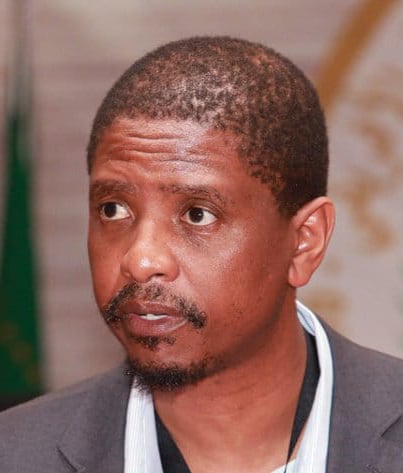National Planning Agencies and Plans have become an established feature of the development planning architecture of the continent. From almost no comprehensive long-term plans in place in the continent 30 years ago to a situation where today at least 40 countries have active national development plans. Out of the 15 countries that have no long term plans in place, all have previous versions that have now expired, and all are working on their next iterations. Assessed purely from a perspective that considers the establishment of national planning institutions and their ability to produce long-term planning documents; indeed, Africa is primed for success.
The reality, however, tells a very different story. Notwithstanding the developmental progress made across the continent, credible assessments point to a landscape of development still defined by the challenges of the past. High levels of poverty, education and health systems that are not adequately contributing to the required development of human capital, low productivity across economic sectors which undermine economic competitiveness and economies that remain reliant on extractive industries.
This presents an interesting dichotomy. Impressive progress made in development planning on one hand and poor development results on the other.
The experience of African countries over the past 30 years, tell us that we have moved from an era of convincing countries of the necessity of long term planning to one where we must support them translate these long term plans into concrete results that deliver tangible benefit for citizens across the continent.
What this short piece intends to do, is present a macro level perspective into some, if not the major, issues that hinder this transition of planning to results. Secondly, the input will lift several issues that have emerged over time and require the consideration of all countries across the continent as they consider their development plans going into the future.
Institutional and Implementation Challenges
As a starting point, the institutional positioning of many of our national planning institutions across the continent set these agencies/councils up for failure from the very word go. In majority of cases, if not all, the long term planning function is placed with a national institution that is Advisory in nature with no executive authority to drive implementation, provide oversight nor influence resource allocation towards these plans. It somewhat renders the role of planning agencies to the mere production of plans, through a consultative process, but without any agency to ensure implementation after the plans have been produced.
On one hand, resource expenditure and overall implementation rests with the executive while the approval of resourcing plans and oversight rest with the legislative arm of government. In both cases, the crucial functions of these arms of the state in relation to the national development plan are not connected in anyway with the institution that helped to shape the plan and bring it to life. This is a strategic weakness of national planning institutions. Bringing to the fore the need to refine their role beyond producers of documents and convening reflection platforms whose outcomes have no influence on anything.
An observable trend across many countries across the continent is that planning institutions are often led by high profile public policy or academic personalities with strong credentials and whose social networks revolve around the ruling elite. In addressing the deficiency of the planning institutions not being sufficiently integrated into the executive functions that drive implementation of these plans, we find that the social location of the Heads of these organisations become an important asset for them. They can network some of the ideas emanating from the planning institutions into public policy, executive priorities and national budgets based on relationships.
Where this is the case, this channel of transmitting the content of these development plans into implementation frameworks that guide government work is insufficient because it is fundamentally based on goodwill. What is required is an institutional approach to closing this gap.
One way that some national planning institutions have been able to close the gap between themselves and the executive is through building assets or instruments that make them an indispensable partner to the executive and oversight bodies such as parliaments. There are various entry points for this based on the relative capacities of different states. One way is through the introduction or strengthening of development data systems that improve the capabilities of the executive and oversight bodies in executing their functions. This is simply one example of positioning planning agencies as indispensable partners but as suggested above this requires the planning institution to fully understand its own planning and implementation system, where the gaps exist and how it can locate itself and build its own capacity to close these gaps. The basic principle here, is that this is less likely to be simply conferred on the planning institution it must engage in a consistent war of positioning.
If one considers the most cited challenges to the implementation of National Development Plans, these revolve around the availability and allocation of resources. In most cases, the argument holds, there are just not enough financial resources to meet public policy needs. The challenge of many of our countries across the continent is that the discussion of financing development is largely concentrated on public finances. Taken alone, indeed many of our countries, are not in a position where the national fiscus is able to support the diverse funding needs.
To address these financing limitations, the challenge before African states even at this point, is the diversification of the financing instruments available to them to alleviate the burden on the fiscus. The main tenets of this diversification centre on two key financing issues for Africa, lowering the cost of borrowing and strengthening the capacity of development financing institutions.
On the first point, it is worth noting and supporting the discussions on the reform of the global financial architecture, ensuring access to capital at much lower rates than what African countries are currently borrowing at. Linked to this, is the importance of reforming the credit rating system that generates the risk perceptions about Africa and directly influencing the current high cost of capital for African states.
On the second point, relating to the role of development financing institutions, the focus is the capitalisation of and cost of capital for African Development Banks (national, regional and continental) to supplement fiscal based investments into development.
Lastly, is the deepening of continental capital markets.
These and other measures that seek to reform the continental financing landscape are crucial in terms of shifting the development financing discussion beyond the fiscus.
The next point which has caused much strain on the implementation of National plans is the inability to stay the course. Often, expenditure is not driven by these long-term plans but by political cycles, shifting national situations and different types of shocks to the system. Therefore, countries end up with partial investments in priorities and change focus before actual results can be seen. In truth, the results linked to national development plans are at outcomes level and can only be observed over the long run. Government’s inability to have staying power in its plans and to stay the course compromises the attainment of the desired results.
Relating to the shifting of priorities across political cycles or changes in administrations it can be deduced that this is due to limited ownership of these plans. They lack sufficient ownership across society, perhaps because they reflect the leanings of dominant political and economic elites at a point in time who present it as a national vision and plan whereas it fundamentally reflects certain social or class interests. When
shifts happen in the political system and different political interest emerge it is inevitable that the new ruling elite will not premise their actions and resource allocations on the national development plan. This brings to the fore, a crucial point of managing the delicate interests of different political, national and economic groupings in the development of the plan. Outside of that, it is almost inevitable that adherence to it will be based on which interests are in power at which point.
A less spoken about point, which hinders the ability of countries to optimally achieve their development plans relates to the misalignment of different policy instruments. For example, a country pursues a particular development outcome (of course it will never be a single outcome that is pursued) and there are various policy instruments that must be used in alignment to one another to achieve that outcome. What we find is that the consideration of how different policy instruments can be used and importantly need to be aligned is often missing. As if policy decisions for different instruments are taken independently of one another and how they relate to one another. Examples of this are often found between trade policy and monetary policy, employment policy and monetary policy, industrialisation policy and fiscal policy, industrial policy and monetary policy, skills policy and industrialisation policy. This is often a reflection of weak government policy coordination where sector ministries and their departments are structured as super ministries that act independently of each other.
In almost all cases development planning is premised in tradeoffs. Countries must make this or that choice relative to many others. In this regard, the practice is often to undertake long-term planning and make these complex decisions as an intuitive exercise based on sentiment.
This is the wrong way of developing long-term plans for countries. Development planning should be undertaken as a scientific process grounded in sound data, projections and modelling. These are skills that remain largely lacking within our continental development planning ecosystems.
Unfortunately, because of this reality, we must depend on international organisations for these models and like everything else in life: there is no free lunch. As scientific as these instruments are, they are not devoid of ideological leanings, abstractions and other related interests. So, they have an ability to channel our plans to undesired paths. Therefore, building African capabilities, such as modeling for long-term planning and foresight analysis becomes key. To strengthen the robustness and quality of our plans on one hand and to safeguard the sovereignty of these plans on the other.
The last significant limitation that will be discussed here, is that which relates to the interaction of the various spheres of government and how these work together to deliver on the national development plan. Often, national development plans take a highly national orientation to development. With a strong sub-national level blind spot. All development happens in context of specific space, not in an abstract area called national. It touches the ground. This brings in the role of sub national level work and the necessity to align their work to national planning processes. There is simply no way that outcomes linked to national development plans will be achieved outside of mastering this crucial intersection point between national and sub-national government. One of the clear challenges in this is the absence of a clear alignment methodology that is based on results and how each region/municipality/ province contributes to the attainment of national targets.
Emerging Priorities for Africa’s Development Plans
Having considered all these challenges/limitations hindering the translation of national plans into results we will shift our attention to some emerging issues that all our African countries need to take into consideration as they think about the future of their plans.
The first is the African Continental Free Trade Agreement. All countries in the continent are progressively realising the potential of the AfCFTA as an economic game changer, premised on increasing the share of trade among African countries. A scan of existing National Development Plans across all African countries is bound to throw out some direct reference to the AFCFTA. However, to truly unlock the potential the AfCFTA
countries must appreciate that this instrument must be underpinned by production capacity of African states to produce their own goods which they will trade. There is no AfCFTA without continental manufacturing. In this regard, we are not seeing how countries are putting forward concrete plans on how they will transform their manufacturing sectors beyond the policy statements that have existed for decades committing to African industrialisation. This is put under even more pressure by the rapid technological changes that have come to dominate modern manufacturing.
Second point is the centrality of small-scale enterprises and their role in the economy and the growth narrative of African countries. They are the backbone of employment, economic participation and livelihoods. Every country is compelled to think about this question as part of its development plan. African Union data indicates that they make up 90% of businesses in Africa and contribute anything between 70 – 80% of jobs in the continent and create over 80% of new jobs across the continent every year. They are indispensable and inevitably form part of any formula that thinks about our future.
However, this must be considered with another question in mind. What is the optimal structure of our continental economy that will support our structural transformation ambitions? It raises crucial questions about the configuration needed to drive productivity, competitiveness, and growth. We’re operating in a global economy driven by trade between nations and a country’s ability to participate effectively in this global market depends on the productivity and competitiveness of its manufacturing sector. This applies to both exploiting domestic markets and venturing into exports.
The informal sector’s ability to compete with imports from more dynamic, highly productive economies is a real question, both in terms of price and quality. In this regard, the informal manufacturing sector may be better suited to a supportive role rather than forming the core of the industrial base.
Thirdly, but without venturing into too many details, as countries think about their future they have to contend with a complex youth bulge that carries both hope and peril for Africa1s development. Already, we see the difficulty many countries face with absorbing the youth into formal employment. Across the continent we are seeing serious political implications for governments as the youth demonstrate their dissatisfaction with the inability of national economies to respond to their needs. This does not only cause governance risks for countries but pose security and stability risks as well. All this requires policy makers to rethink old conceptions and models of economic participation. There is a growing need for countries to see how they can further exploit technological platforms and advancements and put them in the hands of African youth as an asset for economic inclusion.
The world is changing before our very eyes, at a very rapid pace. Both risks and opportunities are part of this change. As we think about development planning in the continent, we must build agility of our planning regimes. To ensure that they are not static. Be that as it may, there are markers in our development landscape that are emerging as standard issues that all countries must address. African countries must focus their attention on youth and expanding national capabilities to absorb this category into meaningful economic participation. This is the greatest challenge of development planning today and this is the result that we need to align towards.
As for then limitations that hinder our ability to translate plans into results, it is for National Planning Authorities across the continent to share experiences that will generate a body of knowledge of what has worked, where and how. Using these to work out a comprehensive reform agenda.
Want to continue reading? Subscribe today.
You've read all your free articles for this month! Subscribe now to enjoy full access to our content.
Digital Monthly
£8.00 / month
Receive full unlimited access to our articles, opinions, podcasts and more.
Digital Yearly
£70.00 / year
Our best value offer - save £26 and gain access to all of our digital content for an entire year!

 Sign in with Google
Sign in with Google 



